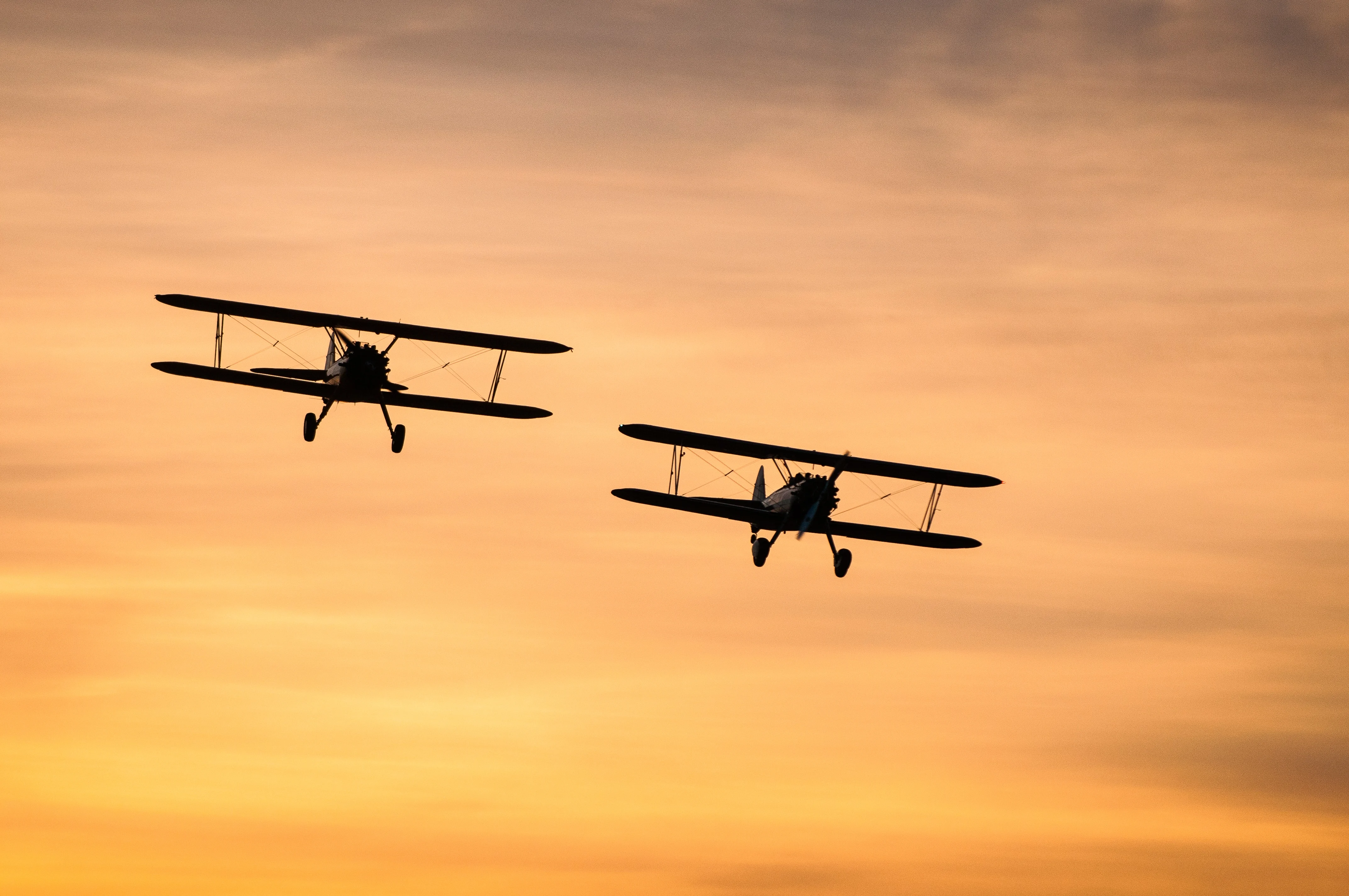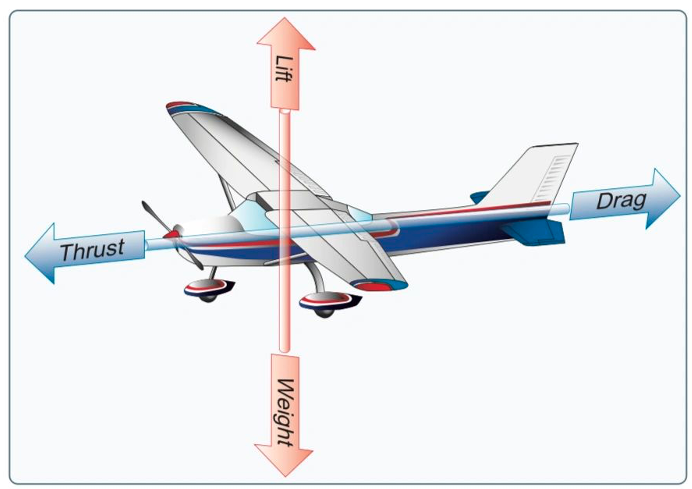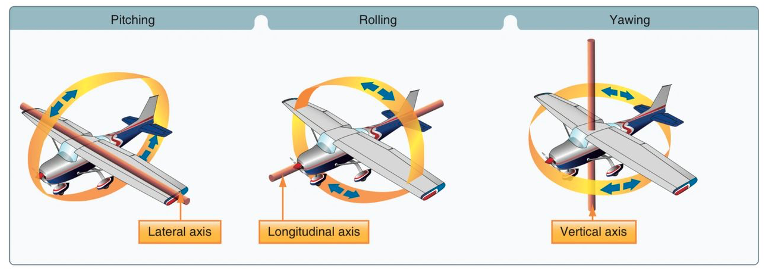In order to understand how the major components and subcomponents of an aircraft work, it is important to be familiar with basic aerodynamic concepts.

There are four forces that influence an aircraft in relation to straight-and-level flight, unaccelerated flight. They are often referred to as the four forces of flight and are thrust, lift, weight, and drag.

Thrust is the forward force produced by the power plant or propeller. Thrust acts in opposition to drag and most of the time (although not always) acts parallel to the longitudinal axis.
Drag is a rearward force that is caused by the disruption of airflow by the wing, fuselage, and any other protrusions from the aircraft. Drag typically opposes thrust and acts rearward parallel to the relative wind.
Weight is the combined load of the weight of the aircraft, passengers, cargo, and fuel. Weight is a downward acting force on the aircraft due to gravity. Weight acts in opposition to lift and acts vertically downward through the aircraft’s center of gravity (CG).
Lift is produced by the affect of the air on the airfoil (or wing) and acts perpendicular to the flight path through the wing’s center of lift (CL). Lift acts in opposition to the downward force of weight.
An aircraft moves in three dimensions about three axes. The three axes are the longitudinal axis, the lateral axis, and the vertical axis.
The longitudinal axis runs through the aircraft’s CG from nose to tail. The lateral axis runs across the aircraft through the aircraft’s CG from wingtip to wingtip. The vertical axis runs vertically through the aircraft’s CG from bottom to the top of the aircraft. All of the aircraft controls move it about one or more of these axes during flight.

The CG is the specific point of the aircraft where the mass/weight of the aircraft centers. In other words, it is the specific point where if the aircraft could be suspended from a string, or balanced on a point, it would remain relatively level. The position of the aircraft’s CG determines the stability of the aircraft inflight. If the CG is aft or towards the rear of the aircraft, it becomes unstable. The CG is computed by the manufacturer during initial design and construction. It can be permanently affected from the installation of onboard equipment, and temporarily affected by aircraft loading.
[Editor’s Note]: All images taken from the FAA Pilot’s Handbook of Aeronautical Knowledge.
Written by Air Power, Inc. Engine Sales Representative, Joshua Denton.
